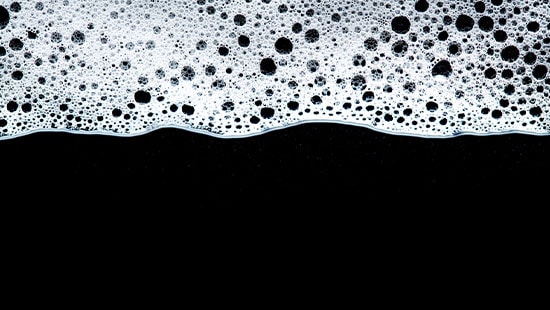
Delayed Coker Foam Control
A well-designed and operated antifoam programme can be used to increase coker throughput and minimise transfer line and fractionator fouling with coke fines. Most importantly, it can reduce the possibility of costly foam-overs. Foaming in the delayed coker unit occurs in the coke drum. As the coke drum begins to fill up with solid coke, the liquid level and the foaming head are pushed up. If left unchecked, the foam will reach near the top of the coke drum and potentially exit the drum, or “foam-over”.
In the case of a foam-over, hydrocarbon is carried overhead and fouls the transfer line from the coke drum to the fractionation tower, and the suction screens of the bottom of the tower become plugged. The finer particles of coke that pass through the suction screens will deposit in the furnace heater tubes and result in severe fouling. The foam-over event could also lead to more silica downstream, potentially poisoning HDS catalyst. Therefore, proper application of the antifoam is critical.
Another important aspect of the antifoam application is the amount of space remaining between the top of the coke bed and the top of the drum at the end of the cycle. This distance is called the outage. By minimising the outage in each drum, higher throughput to the coker can be maintained.
Nalco Water has a selection of antifoams that are applied in order to control the foam front in the coke drum. These antifoams are specialized in optimizing performance relative to the coker and quality of the coker products.

Case Study
Low Silicon Antifoam Improves Efficacy and Reduces Silicon Carryover
We couldn't find any results for "".


